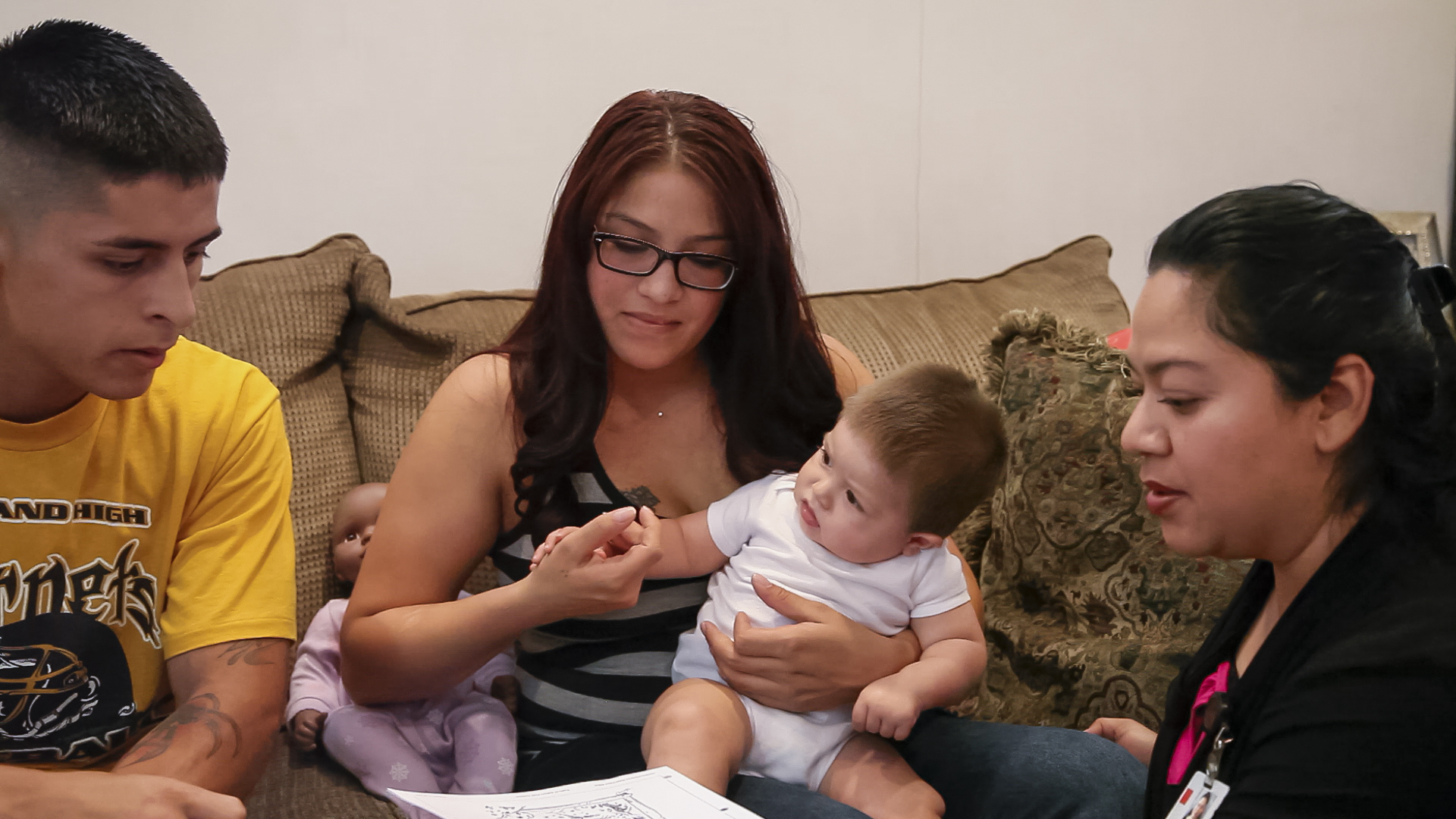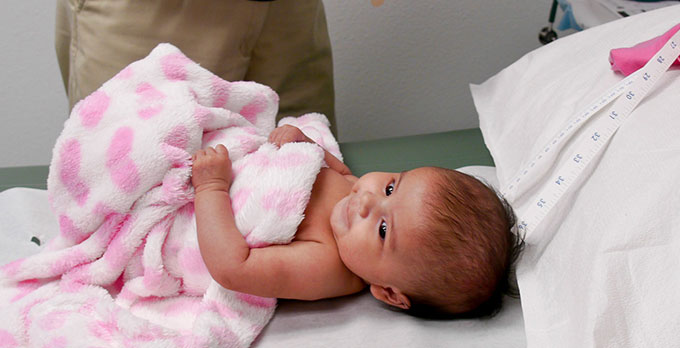1. Countdown to Bath Time
When bathing your baby, you’ll want supplies within arm’s reach. Gather these items before filling up the tub to reduce stress on bath day.
Items your baby will need include:
- Basin or tub
- Clean diaper
- Clean outfit
- Mild soap or baby shampoo
- Soft washcloth and towel
It’s important to never leave your baby unattended, even for the seconds it might take you to grab something you need.
2. Less Is More
Babies don’t get too dirty—aside from spit up, drool and diaper business—and their skin is sensitive.
Don’t use a lot of products or harsh cleansers. That way, you can preserve the gentle balance of protective oils on your baby’s skin. Too much bathing or using too many products can result in dry skin or eczema.
Water and a bit of gentle, fragrance-free soap or cleanser is sufficient. Avoid products with any alcohol, fragrances or perfumes.
3. Caring for Cradle Cap
Cradle cap is another common skin condition for babies caused by over-production of oil. This occurs most often in the first couple months of life. Its yellowish crusty or scaly patches on a baby’s scalp are usually harmless and goes away on its own. It is not contagious to others.
How to care for cradle cap:
- Apply a cradle cap lotion 15 minutes before shampooing
- Wash scalp daily with mild shampoo
- Gently massage lathered hair with a washcloth
- Use a soft toothbrush to help remove the scales
- Ask your doctor if you should apply petroleum jelly to the scaly patches, for moisture
After the flakes are gone, wash your baby’s hair two to three times per week to prevent cradle cap from returning.
4. Choose a Sponge, Sink or Tub Bath
Any of these can be a safe option for bathing your baby if the area is clean and secure. Stay with the baby and make sure they can’t fall or slip under the water. Your newborn’s bath should last no longer than 10 minutes once you get the hang of it. Longer than that may cause dry skin.
Wait to give your baby a tub bath until the umbilical cord falls off and healing is complete. This usually happens 10-14 days after your baby is born. Before then, sponge baths are a safe and effective way to keep your baby clean.
Sponge Bath
Lay your baby on a clean towel. Use a soft, damp washcloth and lukewarm water only (no soap) to gently cleanse your baby’s face, the corners of their eyes and eyelids, scalp and ears—do not use cotton swabs in the baby’s ears. Carefully pat the skin dry. Then wash the rest of your baby’s body in the same way with a little soap, washing their genitals and bottom last.
Squeeze water onto each area of the skin to rinse off the soap. After patting dry, you can use a gentle baby lotion to moisturize the skin. Don’t put lotion on the baby’s face to avoid accidentally getting it in their eyes or mouth.
Once your baby is dry, dress them in a clean outfit. Then place your baby somewhere safe and secure while you clean up the bathing area.
Tub or Sink Bath
Fill the tub or sink with 1-2 inches of lukewarm water with no soap or bubbles. Support your baby’s head and neck with your non-dominant arm. Use your other arm to gently ease your baby into the water, feet first.
Follow the same steps as the sponge bath, washing the baby’s face first with just water. Next, add mild soap or baby shampoo to the washcloth. Lift your baby’s back and head with your arm. Gently rub soap on your baby’s head, front to back. Rinse your baby’s head completely with clean water and pat dry with a towel.
Now it’s time to clean the rest of your baby’s body. With a soapy washcloth, start at the neck and move downward, lathering your baby’s entire body. Make sure you get those easy-to-miss creases and folds, such as between fingers and toes. Rinse soap off your baby completely with a wet washcloth and pat dry with a towel.
Once the baby is dry, lotioned up and dressed, lay them somewhere safe so you can clean up the bathing area.

Related Reading: 9 Tips for Taking Care of Yourself After Birth
Learn about how to care for yourself as you adjust to life with a new baby.
5. Start a Bath & Bedtime Routine
Some families find that a short daily bath followed by a feeding creates a comfortable routine. This can work well if you keep your baby’s skin moisturized. Other families choose a few dedicated “bath nights” a week—two to three baths a week is plenty for most newborns.
Create a routine that keeps your baby clean and fits with your family’s schedule. With time, you will figure out what works best for your family—and bath time can become a fun, bonding moment with the baby.
If you have questions about safe bathing practices or postpartum care, our UNM Women’s Health team is happy to help.

